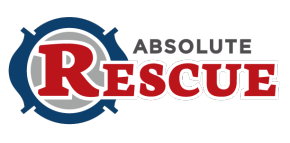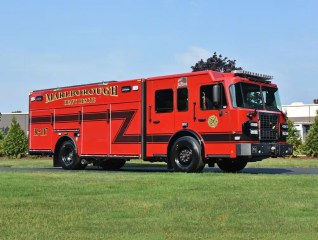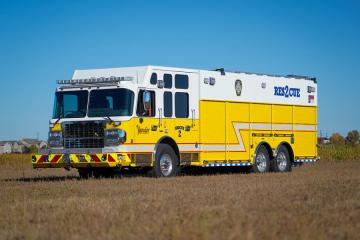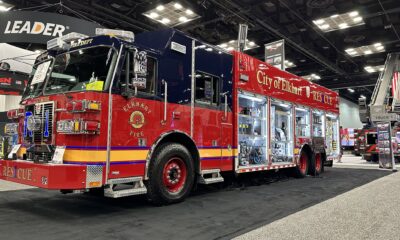Many years ago I arrived on the scene of a double shooting involving two police officers. The shooter was not secured and people were running in every direction. Fire officers were struggling to determine courses of action, and I could see one of the officers lying on the ground not moving.
It was complete chaos.
Amidst this fog of war, myself and a firefighter from another company immediately connected and made a rapid decision, with little communication, to run into the scene and attempt to rescue the down officer. We were both Marines.
The cohesive decisions that were made efficiently and with purpose that day were attributed to our training in the Marine Corps. This event was outside the realm of any fire service training I had completed.
Training, mental conditioning, discipline and mission accomplishment is what drove our actions that day. The most telling piece of it is that we both responded the exact same way.
Technical rescue emergencies can overwhelm emergency responders very quickly. It is easy to develop tunnel vision, mismanage resources, establish the wrong priorities and tackle the rescue sequence in a haphazard and disorganized way.
Managing Rescue
I spend a lot of time on my own, with colleagues and with students honing the skills of rescue management. Rescue management is not an individual or a position. It is the entire response team’s collective performance of disciplined, efficient and organized decisions and actions.
The implication is that every rescuer on scene plays an imperative and equal role. From the incident commander to the equipment runner, each member understands their role and is proficient in analyzing variables and applying knowledge, skills and abilities to overcome the variables and accomplish their mission.
To pull all of this together, teams need to be well trained in both technical and tactical applications. Yet, most of the fire service training focuses on one of those aspects and neglects the other.
For example, there is a growing trend for officers to be highly proficient in command capabilities without stressing the importance of firmly grasping the hands-on requirements for the task at hand. Conversely, rescuers train on their technical skills but neglect problem solving, communications and firmly grasping tactics and command.
For now, let’s consider the tactical components of rescue management.
Assigned Positions
Creating a common system of sectors and responsibilities that translate to different rescue disciplines is key. This is commonly practiced on the fire side. Standard operating guidelines and procedures establish the roles and responsibilities of apparatus based on their order of arrival and purpose.
Additionally, assigned positions on the apparatus allow those individuals to fulfill those apparatus roles and responsibilities in an organized and efficient manner. This decreases communications through implied directives and increases speed.
For this to work, all members must understand the big plan, know the boundaries that they are expected to stay in and communicate any deviations from the expectations.
Here’s how the tactical approach, or rescue management, unfolds on a rescue scene.
First Due
This company is responsible for assessment, safety, operational command and possible rapid rescue. Their primary objective is to organize the rescue sequence and gain access to the victim. This company has seven main objectives.
- Establish command.
- Assess the scene and recognize hazards.
- Interview competent persons or witnesses.
- Make initial rescue or recovery determination.
- Assign remaining crew members recon.
- Develop an action plan with contingencies.
- Maintain operational command if qualified and pass incident command to first arriving command officer.
Item five entails members probing the environment to attempt a rapid rescue if appropriate. At a minimum, this involves gaining access to the victim to refine the action plan, provide care and packaging and address any additional hazard concerns.
These members must have clear boundaries. Their equipment should be versatile and highly mobile.
Second Due
This company is responsible for safety and hazard management. Their primary objective is to make the environment appropriately safe for the rescuers and victims.
This clearly requires a cultural commitment to risking a lot to save a lot and risking a little to save a little. They have four prime objectives.
- Receive briefing from command.
- Identify hazards, then mitigate, manage or monitor them.
- Provide initial safety officer(s) to the most austere and time-critical areas of the operation.
- Augment incoming companies with manpower when the hazard-management process is completed.
There are a few points to remember for the second-due crew. When identifying the hazards, mitigation is the first choice. That means completely remove the hazard from the scenario by avoiding it or eliminating it.
The second choice is managing the hazards with intervening techniques that control them. If those options are unavailable, continuously evaluate the hazard to insure that the level of threat does not exceed what is deemed acceptable.
Also, ensure that the initial safety officer is technically competent. A lack of understanding and mastery of technical rescue applications will result in a complete breakdown of safety oversight.
Third Due
This company is responsible for performing the actual rescue. Their primary objective is to implement the action plan and perform entry and rescue skills for extricating the victim. They too have four prime objectives.
- Receive briefing from command.
- Assign primary and secondary rescuers and don appropriate PPE.
- Refine the action plan with command
- Initiate the development of rescue support systems.
This last item includes equipment and resources that are required for the victim extrication. Those may include high-directional anchors, rope systems, boats, hydraulic tools, tend lines, trench panels and shores, etc.
All Subsequent Companies
These companies will be assigned support operations. Their primary objective to provide manpower and resources to accomplish priorities throughout the event.
- Receive briefing from command.
- Augment the rescue company and facilitate system development.
- Support the entry and rescue operation.
These basic sectors and correlating responsibilities will get rescuers through any technical rescue event. The sectors can be expanded after the initial assignment if it is necessary.
Remember to keep it simple and efficient. If your organization trains on this and implements this approach, you will reap the benefits of having a collective plan that is versatile and adapts without chaos. Evaluate the system and tweak it as needed to fit your organizational capabilities and structure.
Stay safe and train hard.
Rescue Rigs
Vander Fire Department Heavy Rescue
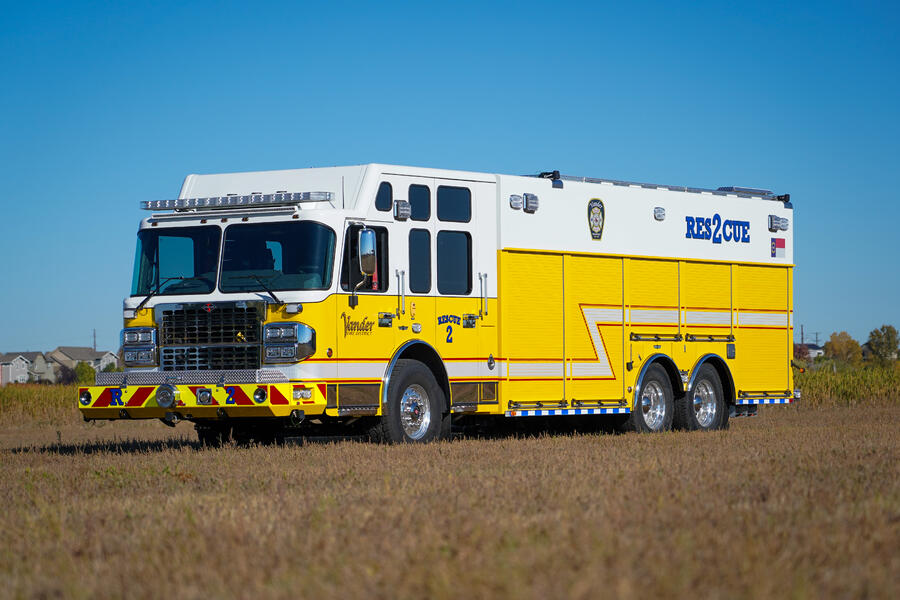
Vander Fire Department, Fayetteville (NC) Heavy Rescue
When spec’ing their new Heavy Rescue, Vander Fire Department chose a 24′ aluminum body mounted on a 4-Door Spartan Gladiator LFD chassis, which houses a Cummins X12 engine. This apparatus comes fully stocked with Hurst extrication equipment, KL series Light Tower, Warn Zeon winch, heavy-duty cargo trays and much more.
Below are links to more information about this heavy rescue:
Overall Pictures
Compartments Pictures
Cab Pictures
Front Pictures
Rear Pictures
Rooftop Pictures
Rescue Rigs
Fresno Fire Department, Fresno (CA) Heavy Rescue

Fresno Fire Department, Fresno (CA) Heavy Rescue
When spec’ing their new Heavy Rescue, Fresno Fire Department chose a 26′ aluminum body mounted on a 4-door Spartan Gladiator chassis, which houses a Cummins X15 engine. This apparatus comes with a custom-built power tool storage tray, OnScene Solutions Transverse Cargo Slides, KL Command Light, dual awnings, Paratech strut mounting and much more.
Below are links to more information about this heavy rescue:
- Production Specification
- Features (Flyer)
- CAD Drawing
Overall Pictures
Compartments Pictures
Cab Pictures
Front Pictures
Rear Pictures
Rooftop Pictures
Misc Pictures
Rescue Rigs
North Charleston Fire Department’s Heavy Rescue
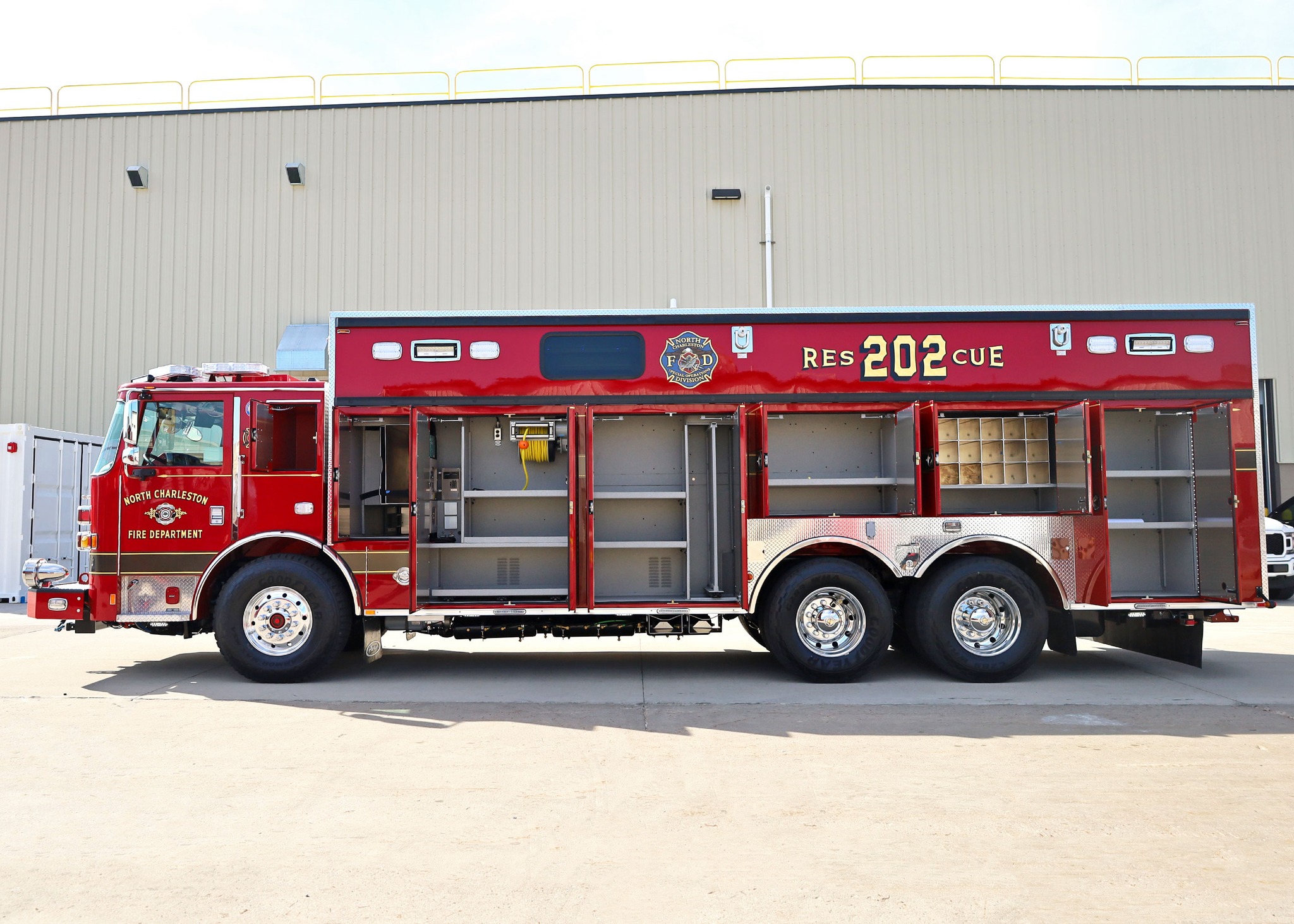
Heavy Rescue
Below are links to more information about this heavy rescue:
